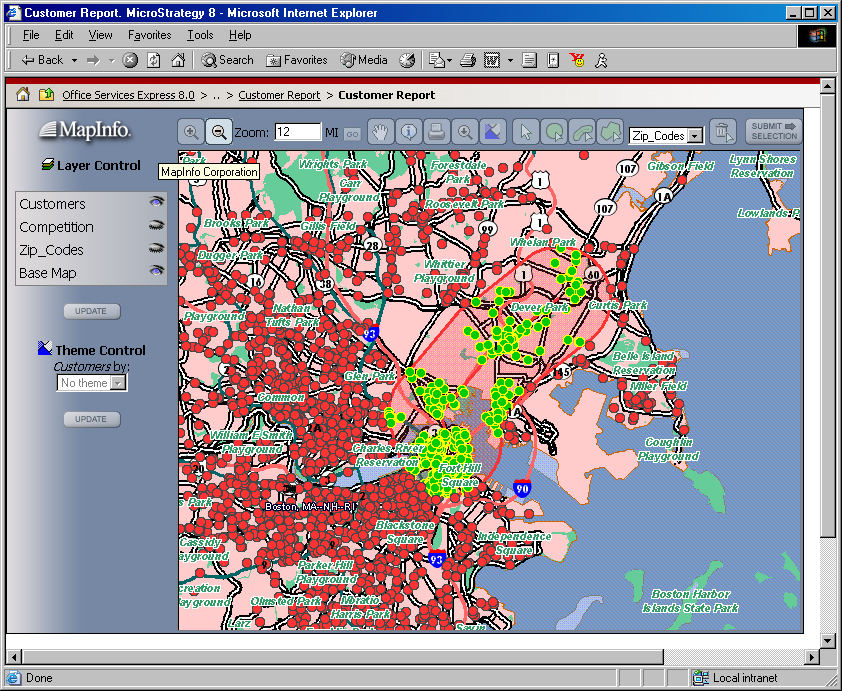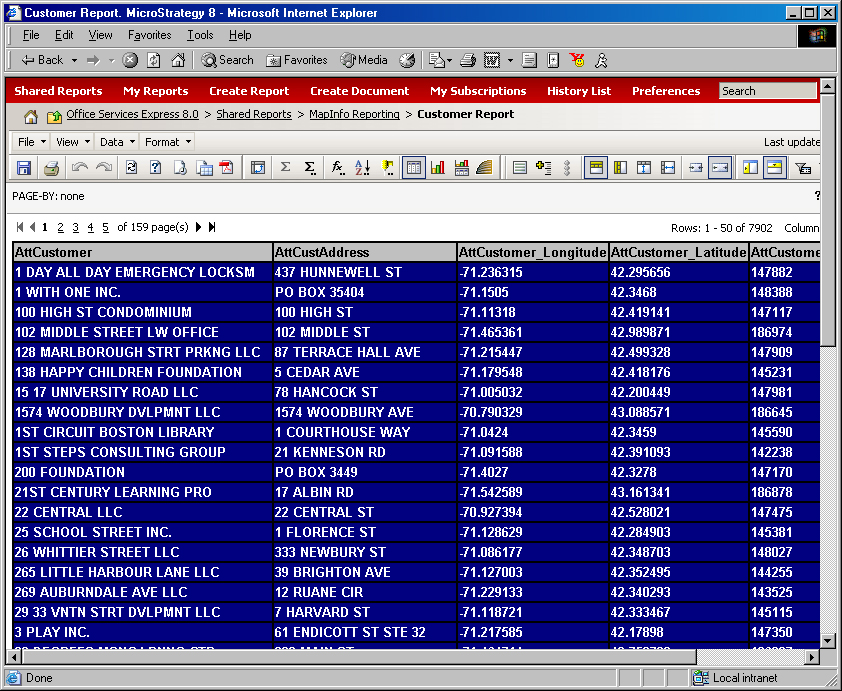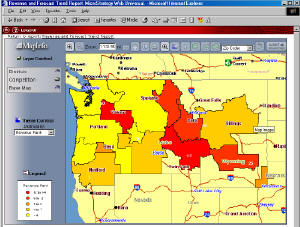In today's retail real estate world, the confluence of business intelligence software, lease management software and site selection models in retail management are changing the speed at which decisions are made.No longer are silos erected, separating departments and decision making.Gone are the days of the senior management needing hours to pour over reams of data from disparate departments in an attempt to determine which issues need his or her immediate attention and which can wait.The ability for retailers to define and track interdependent strategies, through integration of business intelligence systems is resulting in more efficient use of capital and human resources which, in turn has a significant influence on bottom line performance.We have realized, finally, the emergence of technically savvy management teams, and the distancing of the technophobes and "old boy" network of decision making.Senior retail managers are forcing departments to work together and evaluate data and information in a cooperative environment that produces decisions and direction that is in the global interest of the company and not just that of the departments that constitute the organization (e.g., operations, merchandising, marketing, real estate, IT, etc.).
The most common integration of business intelligence tools used by many retail companies today come from firms such as MicroStrategy, Cognos, Business Objects, Hyperion and others.Many of these organizations have penetrated major retail companies at the most senior levels integrating information systems into daily operations.The use of informational executive dashboards allows senior management to constantly access company data transformed into information in the shape of graphs and charts and view it on a desktop.The information, and more importantly the visualization of critical performance metrics, was just a dream only a few years ago.The time and expense associated with information retrieval from an IT department used to bring retail executives to their knees, begging for the data keepers to get them information, and then when his or her requests were granted, the reams of paper that it was delivered in made it almost impossible to decipher.Today, retail executives from the CEO to departmental heads in Operations, Merchandising, Marketing, and Real Estate can retrieve data and use Business Information tools to turn data into information allowing these executives to track store performance, marketing and advertising performance, merchandise turns and shipments, and following real estate activity by market or region.These key metrics can be viewed in an instant, allowing the management team to identify potential problem areas, pull the correct teams in to address the issues and then quickly define a solution to address the problem areas.The same systems allow the management to track the implementation of the agreed upon solution and see whether the results are positive.Given the pressures from the investment community for quarterly performance, C-level management in a retail organization must constantly monitor performance and identify potential problems quickly, and it is these BI tools that provide the catalyst for those quick evaluations and decisions.
others.Many of these organizations have penetrated major retail companies at the most senior levels integrating information systems into daily operations.The use of informational executive dashboards allows senior management to constantly access company data transformed into information in the shape of graphs and charts and view it on a desktop.The information, and more importantly the visualization of critical performance metrics, was just a dream only a few years ago.The time and expense associated with information retrieval from an IT department used to bring retail executives to their knees, begging for the data keepers to get them information, and then when his or her requests were granted, the reams of paper that it was delivered in made it almost impossible to decipher.Today, retail executives from the CEO to departmental heads in Operations, Merchandising, Marketing, and Real Estate can retrieve data and use Business Information tools to turn data into information allowing these executives to track store performance, marketing and advertising performance, merchandise turns and shipments, and following real estate activity by market or region.These key metrics can be viewed in an instant, allowing the management team to identify potential problem areas, pull the correct teams in to address the issues and then quickly define a solution to address the problem areas.The same systems allow the management to track the implementation of the agreed upon solution and see whether the results are positive.Given the pressures from the investment community for quarterly performance, C-level management in a retail organization must constantly monitor performance and identify potential problems quickly, and it is these BI tools that provide the catalyst for those quick evaluations and decisions.
With the advent of Lease Management and Contract Management software from companies such as Accruent, retail organizations now also have the ability to follow real estate transactions, site by site, from cradle to grave.These systems can be integrated into the retailers' network environment allowing remote users to access the system for daily or weekly updates.The real estate vice president can evaluate the status of deals from lease negotiation through construction to ensure that the site plans are being submitted on time and that lease contracts are secure, as well as tracking whether there are delays in construction of projects due to architectural changes or delays in shipping of equipment.The efficiencies introduced to companies that have to manage more than 50 store openings a year and roughly 15% of their real estate portfolio coming up for lease expiration in any given year is substantial.These efficiencies result can reduce time to grand opening by weeks per store and allow the retailer to be more proactive rather than reactive to decisions wrapped around lease expirations.In one such case, a prominent restaurant chain reduced their time from site identification to grand opening by 60 days per unit.There annual growth plan was for 100 new units per year.When opening 100 units a year at a rate of 60 additional operating days per unit due to a quicker to market delivery, they were able to add 6,000 operating days per year to the chains revenue stream.This type of result is bound to put a huge smile on the face of any CEO and shareholder and, clearly, more money in their pockets.
transactions, site by site, from cradle to grave.These systems can be integrated into the retailers' network environment allowing remote users to access the system for daily or weekly updates.The real estate vice president can evaluate the status of deals from lease negotiation through construction to ensure that the site plans are being submitted on time and that lease contracts are secure, as well as tracking whether there are delays in construction of projects due to architectural changes or delays in shipping of equipment.The efficiencies introduced to companies that have to manage more than 50 store openings a year and roughly 15% of their real estate portfolio coming up for lease expiration in any given year is substantial.These efficiencies result can reduce time to grand opening by weeks per store and allow the retailer to be more proactive rather than reactive to decisions wrapped around lease expirations.In one such case, a prominent restaurant chain reduced their time from site identification to grand opening by 60 days per unit.There annual growth plan was for 100 new units per year.When opening 100 units a year at a rate of 60 additional operating days per unit due to a quicker to market delivery, they were able to add 6,000 operating days per year to the chains revenue stream.This type of result is bound to put a huge smile on the face of any CEO and shareholder and, clearly, more money in their pockets.
The leadership of retail chains today grew up in the age of technology and was educated in the use of multiple layers of information to make sound decisions.Gone are the days of reliance on old friendships or "gut feel" to drive business decisions.The lack of quality real estate, the competition for land and the pressure from Wall Street has pushed the senior management to find ways to enhance decision making to a level that significantly affects profits.The technologies cited above afford management the opportunity to improve strategic real estate decision making, get stores to market quicker and increase revenue and to create early warning programs that allow them to take action against negative trends in the business.
